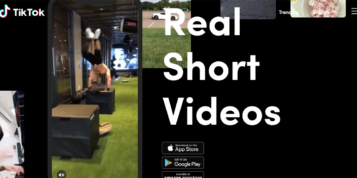Charities and social media are on paper, a perfect fit. If you had asked the third sector to design a tool for communication, engagement, mobilising supporters, fundraising and information sharing, chances are they would have come up with a social network of some type.
After a slow start, mostly brought about by a lack of resource, charities are using social networks all the time. Blackbaud conducted research with more than 300 UK charities last year and we found that 84 percent were already using social media for fundraising, or planned to in the next 12 months.
The question today is not whether a charity should use social media, but how it should use the information that supporters are sharing on social media to attract more people to its mission and increase fundraising. The answer to the question lies in understanding social media constituents and identifying which ones are the most “social”— those who best interact with and influence others across their online networks—because, while each constituent is a potential donor, some are more adept at spreading the word and energising others.
By knowing these active, influential social media constituents, a charity is in a position to develop mutually beneficial relationships with them that respects their advocacy for the cause. But are charities making the very most of the powerful resource they have at their fingertips? Are they missing the opportunity to get their message to millions more people? For the majority of not-for-profits, the answer to both questions is ‘yes’ and the way to address this is by utilising social scoring.
Social scoring = increased fundraising
The idea of social scoring has been around for years but few charities look at it as it is perceived as being too much work for not enough obvious return.
Charities can maximise the value of that data by pulling it out of their database and using it to start to identify who their key influencers are and utilising that resource.
But our research found that charities that utilise their social networks for fundraising raise on average 40 percent more than those who do not. However, we also discovered that less than half of peer-to-peer fundraisers actually use their social networks. So how do charities find out which of their donors or fundraisers are actually going to be able to help them? They need to start by identifying the more powerful supporters and to do this they need to assign a social score.
There are many tools out there for social scoring, the most famous of which is Klout. Klout will look across your social network use, your followers, your retweeters, your content, your breadth and a range of other areas and assign you a social score. Data can be analysed, crunched and stored in a charity’s own database.
Charities can maximise the value of that data by pulling it out of their database and using it to start to identify who their key influencers are and utilising that resource. They may not identify a Stephen Fry but they could identify someone who influences others for the good, a blogger who is regularly read by thousands of people and who could be perfectly willing to help out.
A charity can even look more at specific social media with tools such as Tweet Grader. This looks at just Twitter as a tool and provides a lot of useful information. It can even help focus on a specific geography, with its Location tool that will show all the key influencers for a charity’s local area.
Social scoring in action – Alzheimer’s Society
I recently came across an excellent example of a charity using social scoring. I happened to see a tweet from the Alzheimer’s Society thanking someone called Charlie for their video. I was intrigued as the Alzheimer’s Society had put a fair bit of effort into the thank you message, creating a video for that purpose.
Charlie McDonnell has a hugely successful YouTube channel (1.5 million subscribers) and Twitter account (500k+ followers), talking about comedy and science amongst other things. He was taking part in this year’s Project for Awesome and decided to create a video talking about the Alzheimer’s Society, his grandfather having suffered from the disease.
This is one of the most impressive fundraiser-devised videos I’ve ever seen. With a reach of more than a million people, Charlie has the power to not only fundraise but also educate people on the things to look out for with this disease. There could be a Charlie lurking within any charity’s network.
Tapping into the influencers
But a charity’s influencers are not always the people they might expect them to be. As an industry the charitable community has a vast number of people willing to help out by volunteering, donating and supporting. But it is not taking advantage of one of the biggest trends in society right now by going beyond the email blast and really tapping into the immense influence held by some of those supporters.
Social media offers such a wealth of publically available information to help charities better understand their constituents. By segmenting them through social scores, they can identify the most highly connected individuals that encourage and influence others. With this information, a charity can get to know those individuals, collaborate with them and use their social skills to advocate. A clear view of your social media constituents is critical as people increasingly rely on each other to endorse, defend and decry products and causes.
A 2011 Nielsen study of online consumers showed that 92 percent of those surveyed trust recommendations by friends, family and word of mouth above all other forms of advertising – that is something charities cannot afford to ignore.






